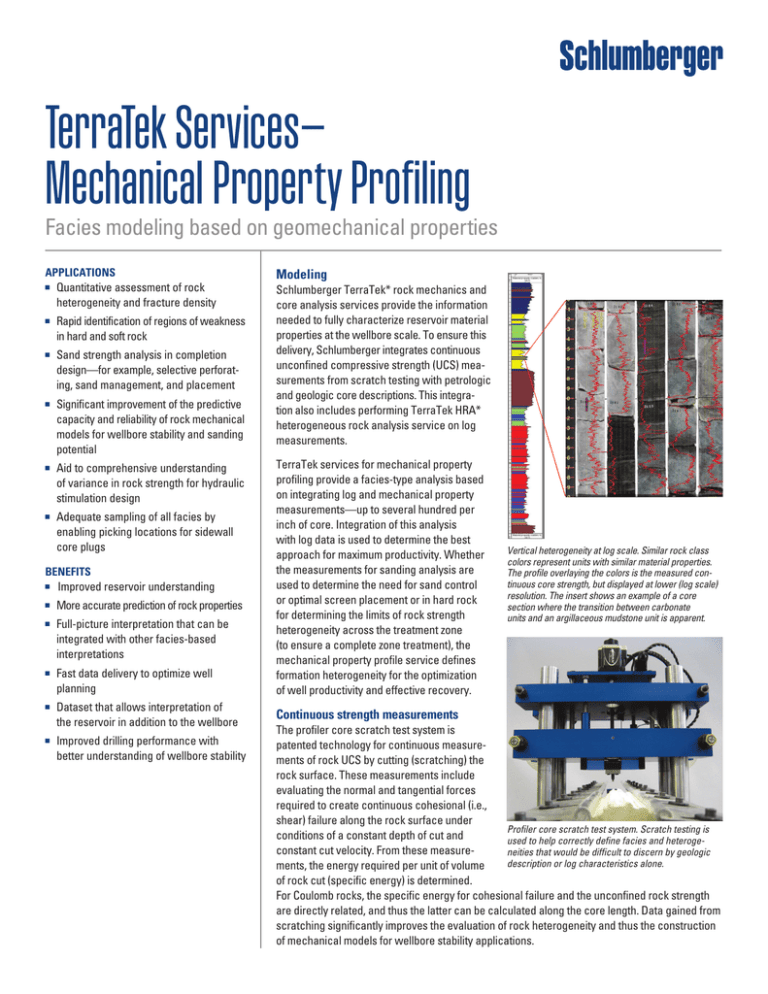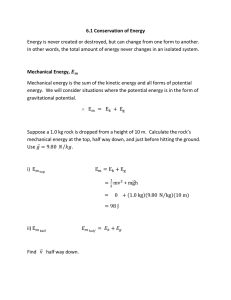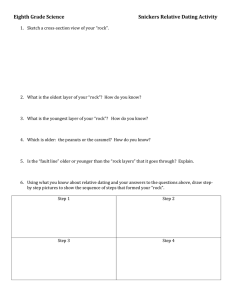
TerraTek Services—
Mechanical Property Profiling
Facies modeling based on geomechanical properties
APPLICATIONS
■■
■■
■■
■■
■■
■■
Quantitative assessment of rock
heterogeneity and fracture density
Rapid identification of regions of weakness
in hard and soft rock
Sand strength analysis in completion
design—for example, selective perforating, sand management, and placement
Significant improvement of the predictive
capacity and reliability of rock mechanical
models for wellbore stability and sanding
potential
Aid to comprehensive understanding
of variance in rock strength for hydraulic
stimulation design
Adequate sampling of all facies by
enabling picking locations for sidewall
core plugs
BENEFITS
■■
Improved reservoir understanding
■■
More accurate prediction of rock properties
■■
■■
■■
■■
Full-picture interpretation that can be
integrated with other facies-based
interpretations
Fast data delivery to optimize well
planning
Dataset that allows interpretation of
the reservoir in addition to the wellbore
Improved drilling performance with
better understanding of wellbore stability
Modeling
Schlumberger TerraTek* rock mechanics and
core analysis services provide the information
needed to fully characterize reservoir material
properties at the wellbore scale. To ensure this
delivery, Schlumberger integrates continuous
unconfined compressive strength (UCS) measurements from scratch testing with petrologic
and geologic core descriptions. This integration also includes performing TerraTek HRA*
heterogeneous rock analysis service on log
measurements.
TerraTek services for mechanical property
profiling provide a facies-type analysis based
on integrating log and mechanical property
measurements—up to several hundred per
inch of core. Integration of this analysis
with log data is used to determine the best
approach for maximum productivity. Whether
the measurements for sanding analysis are
used to determine the need for sand control
or optimal screen placement or in hard rock
for determining the limits of rock strength
heterogeneity across the treatment zone
(to ensure a complete zone treatment), the
mechanical property profile service defines
formation heterogeneity for the optimization
of well productivity and effective recovery.
Continuous strength measurements
Vertical heterogeneity at log scale. Similar rock class
colors represent units with similar material properties.
The profile overlaying the colors is the measured continuous core strength, but displayed at lower (log scale)
resolution. The insert shows an example of a core
section where the transition between carbonate
units and an argillaceous mudstone unit is apparent.
The profiler core scratch test system is
patented technology for continuous measurements of rock UCS by cutting (scratching) the
rock surface. These measurements include
evaluating the normal and tangential forces
required to create continuous cohesional (i.e.,
shear) failure along the rock surface under
Profiler core scratch test system. Scratch testing is
conditions of a constant depth of cut and
used to help correctly define facies and heterogeconstant cut velocity. From these measureneities that would be difficult to discern by geologic
description or log characteristics alone.
ments, the energy required per unit of volume
of rock cut (specific energy) is determined.
For Coulomb rocks, the specific energy for cohesional failure and the unconfined rock strength
are directly related, and thus the latter can be calculated along the core length. Data gained from
scratching significantly improves the evaluation of rock heterogeneity and thus the construction
of mechanical models for wellbore stability applications.
TerraTek Services—Mechanical Property Profiling
FEATURES
■■
■■
■■
■■
■■
■■
Continuous, high-resolution UCS
measurement over the entire cored
interval, creating a continuous log
Integration of direct core measurements
with log measurements
Convenient geomechanics-based
facies analysis
Fast, efficient process that delivers
data in a matter of days
Rock class analysis designed
to be extended to offset wells
High-resolution platform for geomechanical
evaluations of in situ stress and wellbore
stability
The system provides core-scale continuous
measurements of rock strength, allows quantitative assessment of rock heterogeneity and
fracture density, and rapidly identifies regions
of weakness. The mechanical property profile
service integrates these continuous strength
measurements with petrologic and geologic
attributes for improved evaluation of rock
texture, composition, and lithotype variation.
It allows defining scaling relationships of
mechanical properties, from plug size to core
Core scratch test system and scratch test results on
screen. The depth of the scratch on the core’s surface
size to well size. The service integrates these
indicates rock strength (red curves), which can be
attributes with dominant rock classes along
correlated to rock mechanical properties.
the length of the core and the wellbore.
The continuous strength data is taken digitally and is depth-corrected to conventional log data.
This data provides an easy, high-resolution integration with TerraTek HRA service and petrophysical
log data, such as density, compressional, and shear information from sonic and even image logs.
Heterogeneous rock analysis
TerraTek HRA service is used to evaluate the variability of log measurements as a function
of depth, create a pattern of these combined responses and identify the occurrence of identical
data patterns along the interval of interest. Results from the analysis define all existing fundamental,
nonredundant rock classes with distinct material properties.
Evaluation of log data using TerraTek HRA service provides a mathematically precise, objective,
and robust methodology for defining rock classes with distinct material properties. The analysis is
a mathematically based methodology that can be used on exploratory wells, where no previous
definitions of the various rock types exist. In these cases, the analysis provides differentiation
between the various reservoir and seal units without explicitly differentiating producing and
nonproducing intervals. The principal advantage of TerraTek HRA service in these circumstances
is the accurate identification of the extent of a region to be cored.
TerraTek HRA service is used to show heterogeneity at log scale and to discriminates zones of
consistent mechanical behavior within heterogeneous media. Results from this analysis are used
for selecting core samples (or rotary sidewall plug locations), giving the most efficient sampling
plan for heterogeneous formations, and allowing the identification of the units with best reservoir
quality and fracture containment potential.
Uncored wells
Rock class tagging allows the comparison of log responses in a well (e.g., an uncored well)
with log responses and associated reservoir properties in a reference well (e.g., a cored and
adequately characterized well via laboratory testing or scratching, if available). This form of
tagging uses definitions from the reference well to assign rock classes to comparison well logs.
It also produces an error curve that evaluates the degree of compliance between the two wells.
Good compliance indicates a strong correlation between the two wells and associated rock
classes and a strong similarity in material properties. Poor compliance between some sections or
the entire section between the two wells indicates the presence of new (nonrepresented) facies.
Rock class tagging between wells and compliance analysis help monitor changes in thickness and
location of previously defined rock classes between wells. Tagging also helps identify new facies
requiring coring and laboratory characterization.
www.slb.com/TerraTek
*Mark of Schlumberger
Copyright © 2014 Schlumberger. All rights reserved. 13-TS-0143




